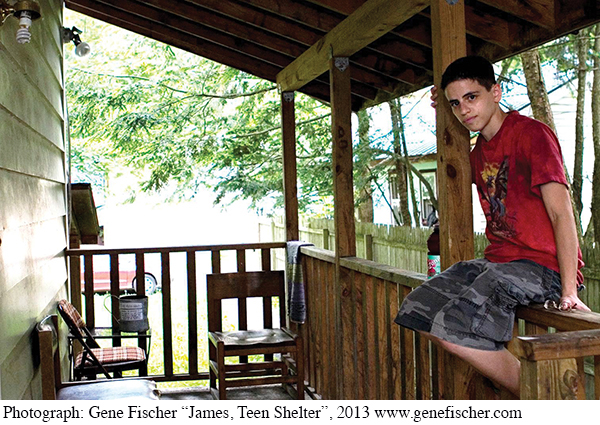Chapter Introduction
9
Lifespan Development

PEOPLE ARE PEOPLE
PROLOGUE
JAMES IS THE KIND OF GUY PEOPLE ARE DRAWN TO—
James is also transgender. He is biologically female, but he identified as male very early in life. In fact, he can’t even remember a time when he didn’t feel like a male. “I remember being a little kid and trying to get my friends to refer to me as a boy,” he says. His early identification as male evoked a range of reactions. His friends awkwardly attempted to ignore it. His father was angry. His mother was conflicted. Both parents insisted he call himself a “tomboy” instead of a boy, firmly correcting him again and again. Lacking any other way to describe his feelings, James soon began parroting his parents: “I am not a girl; I am a tomboy.”
But even though James faced unusual challenges growing up, his childhood was in other ways no different from that of other children. Through his childhood and adolescence, James progressed through the typical stages of development that we’ll learn about in this chapter.
It wasn’t until middle school that James first heard the term transgender, but at the time he didn’t apply it to himself. James just wanted to live his life in accord with his sense of self—

MYTH OR SCIENCE?
Is it true . . .

That the genes you inherit provide an unchanging “blueprint” that determines your physical characteristics, abilities, and personality traits?
That talking “baby talk” to infants and toddlers won’t harm their language development?
That educational videos, like Baby Einstein, help babies learn how to talk?
That transgender people are homosexual?
That most adolescents have poor relationships with their parents?
That many middle-
aged people experience a “midlife crisis”? That dying people go through five predictable stages—
denial, anger, bargaining, depression, and acceptance?
A turning point came a few years ago, when James was 22 years old. Dressed in women’s clothes—
Later that day, another staff member who overhead James’s extreme reaction asked James point-
But rather than being shocked or exhilarated by his discovery, James was simply relieved to learn that there was a term for his experience—
Someday, James hopes to be able to afford to have surgery to alter some of his female sex characteristics to more closely match his identity as male. For now, he is developing a life living as a man.
A turning point came a few years ago, when James was 22 years old. Dressed in women’s clothes—
Later that day, another staff member who overhead James’s extreme reaction asked James point-
But rather than being shocked or exhilarated by his discovery, James was simply relieved to learn that there was a term for his experience—
Someday, James hopes to be able to afford to have surgery to alter some of his female sex characteristics to more closely match his identity as male. For now, he is developing a life living as a man.

As is true for all of us, James’s relationships with friends and family are an important part of his life. When James became comfortable telling people that he was transgender, the news elicited a range of reactions from anger and confusion to complete acceptance. His brother was among those who accepted James unconditionally. He said, “Well, I never really saw you as a sister in the first place, so I don’t think anything is changing other than pronouns.”
In addition to acceptance of his gender identity, James shares the same kinds of dreams many of us have during early adulthood. He would like a home in the woods, and a family of his own. “I’d like to have a kid. Or two. I’d probably pick adoption if I could.” And James also wants to be a part of a broader community. “I don’t like being around only people who are similar to me. That’s boring. I like a range of people. And I guess my message is we really need to start viewing people as people. Not by their skin tone. Not by their LGBTQ status. And not by their gender. People are people.”
What James’s story illustrates is that who we become in this life—